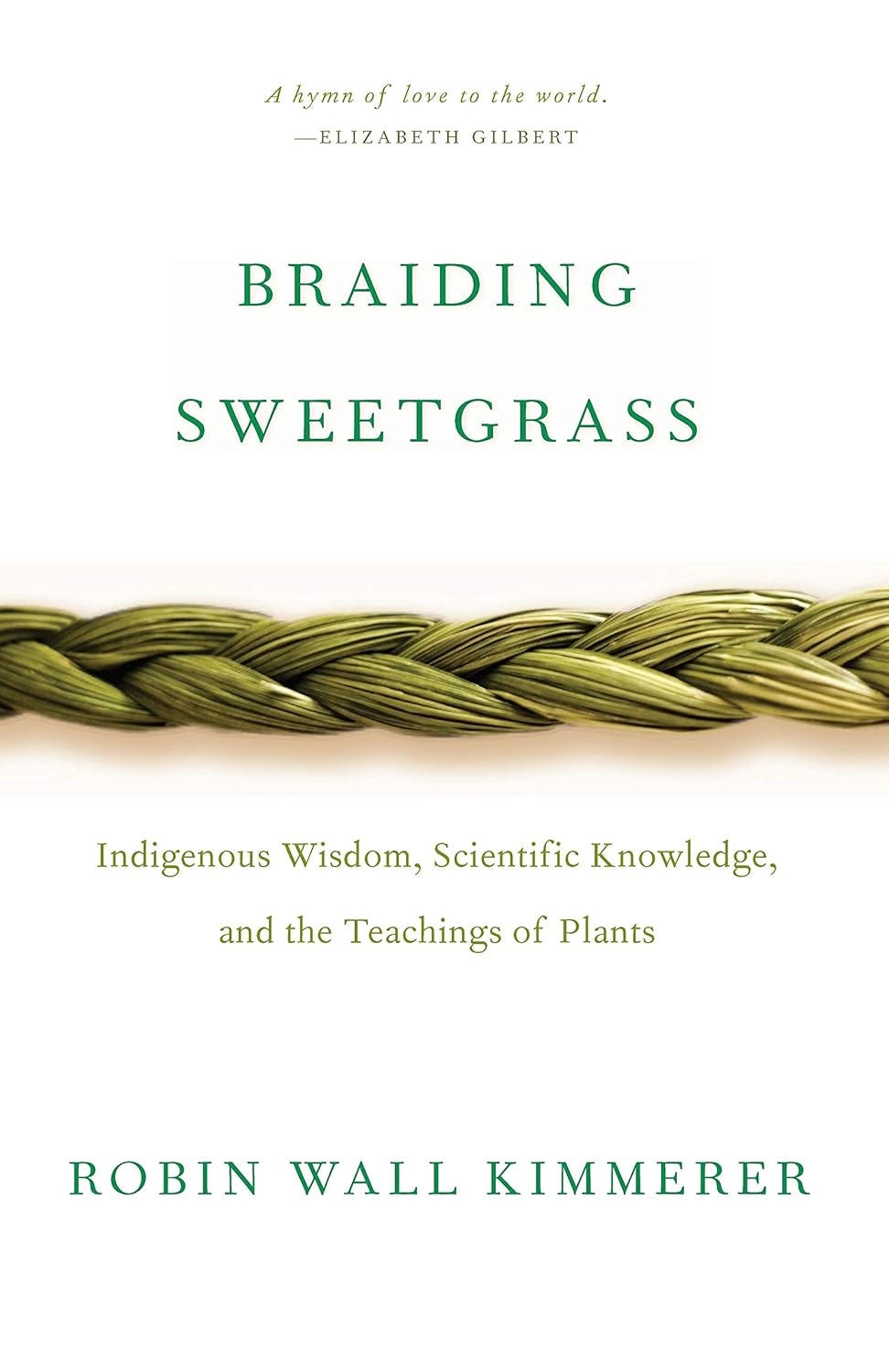Reciprocity
And a special shout out to fellow Substack writer, Julie Gabrielli
1/24/25 update: you may find the interview series here.
Hello beloved reader,
I have been inspired by
’s beautiful writing many a time, and most recently by her interviews with nature writers, which she calls Reciprocity: the interview.To dig a little deeper, I investigated various definitions of the word reciprocity:
Dictionary.com: the practice of exchanging things with others for mutual benefit, especially privileges granted by one country or organization to another.
Oxford: reciprocity is a formal noun that means a situation where two people or groups give each other the same help or advantages.
Mirriam Webster: a mutual exchange of privileges.
From what I understand, reciprocity is a significant aspect of all indigenous cultures. I searched Robyn Wall Kimmerer’s exquisite book Braiding Sweetgrass1 for the word reciprocity, and it appears 91 times (my Kindle edition allowed this search).
Ms. Kimmerer writes:
A sheaf of sweetgrass, bound at the end and divided into thirds, is ready to braid. In braiding sweetgrass—so that it is smooth, glossy, and worthy of the gift—a certain amount of tension is needed. As any little girl with tight braids will tell you, you have to pull a bit. Of course you can do it yourself—by tying one end to a chair, or by holding it in your teeth and braiding backward away from yourself—but the sweetest way is to have someone else hold the end so that you pull gently against each other, all the while leaning in, head to head, chatting and laughing, watching each other’s hands, one holding steady while the other shifts the slim bundles over one another, each in its turn. Linked by sweetgrass, there is reciprocity between you, linked by sweetgrass, the holder as vital as the braider.2
And in this tradition of reciprocity, linked by the art of writing, the reader is just as vital as the writer.
With any form of art, the one who experiences that art, not only forms a connection with the creator of that art, but they also get to connect with others who have experienced that art too.
I LOVE conversations with friends and family about movies, books, theater, concerts (classical and all kinds), art exhibits… This is just one of the ways that art brightens the connections between us.
Of course I also enjoy writing about any art I may have experienced.3
Perhaps this is an honoring of the interdependence between writer and reader; between creator and receiver; and with indigenous cultures, there is always an honoring of the interdependence between human beings and our beautiful Mother Earth too.
And in honor of Julie Gabrielli’s fabulous interviews with nature writers, I am inspired to offer a series of interviews with writers who touch upon the topics of the Divine Feminine and spirituality.
As such, I’m thrilled that the wonderful
has agreed to be the first interviewee. Stephanie is the author of the Substack, in addition to these books:A Delightful Little Book On Aging (published in 2020 by SheWrites Press)
Creatrix Rising: Unlocking the Power of Midlife Women (published in 2021 by SheWrites Press)
Stephanie is also the editor for: Art in the Time of Unbearable Crisis: Women Writers Respond to the Call (published in 2022 by SheWrites Press)
Stephanie’s writing is often a celebration of creative resilience and a meditation on the passage of time, in addition to introducing the Creatrix as a vital archetype to bridge the gap between the traditional roles of Mother and Crone. By reclaiming this archetype, women redefine midlife as a time of profound creativity, sovereignty, and purpose. Stephanie explores how storytelling and mythology provide tools for women to weave their own destinies, reclaim their creativity, and pass on a legacy of empowerment.
Stephanie’s writing embodies a spirit of kindness and generosity. She invites readers to reflect on their own artistic journeys and she writes of the power of creative expression to anchor and guide us through life’s inevitable changes. Her themes are deeply reflective and resonate with the passage of time, personal growth, and the role of art in interpreting life's complexities. Her ‘creative eldering’ becomes a metaphor for embracing life’s cycles with grace.
Next week I will share the first offering, from Stephanie Raffelock, in this written interview series. Thank you Stephanie for participating♥️🙏🕊️
‘What is also fascinating to me is that Braiding Sweetgrass was published in 2013 by the small, independent press, Milkweed Editions, but it became a word-of-mouth grass-roots bestseller, and only hit the New York Times bestselling list ten years after it was first published.’ As I wrote in this post.
Kimmerer, Robin Wall. Braiding Sweetgrass: Indigenous Wisdom, Scientific Knowledge and the Teachings of Plants (p. ix). Milkweed Editions. Kindle Edition.






What a fabulous offering, Camilla! The creatrix is a lovely, empowering archetype. Can’t wait to read the interview. 🥰
Ohhhh how exciting an interview series! I look forward to the first interview — and the many that follow. Also, as always I enjoyed the insights you offered in this piece on reciprocity :)